

Above left: Signature of William Stuart Cameron inscribed in his copy of Pothier on Obligations (1806).
Above right: Signature of Charles Edward Shepherd taken from a copy of the statement of claim in Weiting and Richter Ltd v Samuel Thomas Fredericks, Action No 293 of 1913.
The partnership known as Cameron and Shepherd was formed “on or about the 4 April, th 1901”, as later partnership agreements recite, by two solicitors, William Stuart Cameron and Charles Edward Shepherd.


Left: William Stuart Cameron c 1925 at his residence “Broomknowe,” 141–142 Waterloo Street, Georgetown (Photograph courtesy Mr Walter Stuart Cameron). Below the photograph is Mr Cameron’s signature taken from the plaint in Weiting and Richter v Sercharan filed in the Georgetown Magistrate’s Court on 6 January 1916.
William Stuart Cameron, who was born on 12 October 1861, was the son of William and Jane Cameron. His father, a British Guiana merchant, was said to be descended from Abraham Jacob van Imbijize van Batenburg, the Dutch Governor of Berbice from 1789 to 1802, and 1804 to 1806. William Stuart Cameron was the brother of Catherine Jane Bourke, nee Cameron and Henry Douglas Cameron.
Charles Edward Shepherd was born on 16 April 1878 at Mount Aboo, India. His grandmother, Catherine Cordelia Cameron, was William Cameron’s aunt. In 1901 he arrived in British Guiana to enter into partnership with William Stuart Cameron, who had already been a practicing solicitor for fifteen years.
In the first two volumes of the Law Reports of British Guiana (New Series) published between 1890 and 1892, William Stuart Cameron is listed as solicitor on record in eleven cases. However, after 1892 the names of solicitors on record in the reported cases were no longer published and no reference can therefore be found in the law reports to Messrs Cameron and Shepherd as solicitors on record in 1901.

The earliest document that can be found stamped “Cameron and Shepherd, Solicitors”, indicating the partnership of William Stuart Cameron and Charles Edward Shepherd, is a copy of a specially indorsed writ, which was filed on 26 February 1902 on behalf of Hand in Hand Insurance in Hand in Hand Mutual Guarantee Fire Insurance Company of British Guiana v John Alleyne McWatt, Action No 45 of 1902. In that writ, Cameron and Shepherd’s address is listed as 20 Water Street, Newtown, Georgetown.
Left: A copy of the earliest known writ filed by Cameron and Shepherd on 26 February 1902
A draft opinion of William Stuart Cameron dated March 1905 in response to a letter of 28 March 1905 from Mr James Slater, the Secretary of the Hand in Hand Mutual Guarantee Fire Insurance Company, also survives. Mr Slater enclosed with his letter a copy of a letter dated 27 March 1905 written to him by Mr John B Laing, the Managing Director of the British Guiana Bank, seeking to determine whether a blank scrip with an authority to transfer it was adequate security for a loan. Mr Slater further sought to determine whether the company had power to accede to the bank’s request as to the registration of the authority to transfer scrip and what would be the position of the company should the authority be presented after the death or insolvency of the scrip holder. He requested the opinion by the following Friday, in time for the directors
meeting. Together with Mr Cameron’s draft opinion are two pages of notes in very fine writing setting out the cases relevant to the opinion. Although he researched the law on the issues, Mr Cameron did not refer to it in his opinion. He instead gave the advice of an experienced solicitor
Right and below: The notes made by Mr Cameron from cases on the legal questions asked by Mr Slater.


Among other things, Mr Cameron advised: “I do not think that the company could, without incurring considerable risk, attempt to hamper the transfer of scrip in the way Mr Laing proposes”. He concluded his opinion by saying:
Whether the executor by the pledge of an authority to transfer in the usual principle would render the bank secure if the pledgor subsequently declined to either repay the loan or to transfer the scrip, is a question on which it seems to me Mr Laing should look for advice to the Bank’s lawyers not yours. This also applies to Mr Laing’s query as to the effect of the death or insolvency of a pledgor who had given such authority to the Bank.
If your company press for my advice, I will of course be happy to give it, but I do not think that you should represent to the British Guiana Bank, until the necessity arises, what your company would or would not do or recognize under any given circumstances. Should you make such representation, in the event of loss being occasioned to the British Guiana Bank by reason of its acting thereon, it might be that your company could be held liable for the loss.
Documents from 1909, in the matter of De Cairos v Hand in Hand Mutual Guarantee Fire Insurance Company, Action No 1 of 1909 give the address of Cameron and Shepherd as 3 High Street, Newtown, with the barrister and solicitor for De Cairos, Eustace Gordon Woolford (who was later knighted, appointed King’s Counsel, and served as Mayor of Georgetown, and then Speaker of the Legislative Assembly) and J B Woolford occupying 2 High Street, Newtown, the current address of Cameron and Shepherd. Documents from 1911 and 1913 in the matters of Veerasawmy v The British Guiana Balata Company Ltd, Action No 113 of 1911, and Weiting and Richter Ltd v Samuel Thomas Fredericks, Action No 293 of 1913, confirm that Cameron and Shepherd’s address continued to be 3 High Street, Newtown during those years.
By November 1921, however the partners of Cameron and Shepherd had removed from 3 High Street and rented 2 High Street, as the statement of claim in Weiting and Richter v A S Khan, Action No 639 of 1921, filed on 10 November 1921 gives 2 High Street as their address for service.

Above: Letter from Cameron and Shepherd dated 11 June 1910 to a Mr Veerasawmy. The address is 3 High Street. The letter was probably never sent as both the original and a copy were retained.
On 24 February 1933, the three senior partners of Cameron and Shepherd at the time (G J de Freitas KC, H C Humphrys and G R Reid) acquired transport (No 165 of 1933) for the property at 2 High Street, Newtown (now 2 Avenue of the Republic), in equal undivided shares. The property had previously been owned by Joseph Augustus Tengely, who bought it on 3 January 1881 at an execution sale in the matter of Joseph Augustus Tengely v Richard Sydney Lambert (both of Georgetown, according to the Official Gazette of 18 December 1880, in which the sale was advertised). Mr Tengely died in 1890 and in 1933 the property was sold by his heirs, who were all resident in England. (Mr J A King has noted anecdotally that Mr H C B Humphrys once told him that the north-eastern room of the uppermost flat, which was destroyed by fire in 1990, was said to have been occupied by the ghost of ‘Granny’ Tengely, who could sometimes be heard rocking in her rocking-chair from the floor below).


Left: Guilherme José de Freitas KC (Daily Chronicle, 12 July 1938). Below the photograph is his signature taken from articles of partnership of Cameron and Shepherd dated 15 December 1931.
Right: Hubert Chester Humphrys (Daily Chronicle, 28 February 1939). Mr Humphrys was appearing for Bookers in the Commission of Enquiry into the 1939 Leonora Strike. Belowthe photograph is his signature as inscribed in his copy of Oliphant’s Law of Horses (1908).
On 1 March 1919, the partnership was changed from a partnership of two solicitors to one of two solicitors and two barristers. Later partnership agreements recite that William Stuart Cameron, solicitor, Charles Edward Shepherd, solicitor, Guilherme José de Freitas, King’s Counsel and Hubert Chester Humphrys, barrister,
conceiving that it would be profitable and to the mutual advantage of each to carry on a partnership of two barristers and two solicitors, decided to and did carry on their professions in partnership under the name of ‘Cameron and Shepherd’ for many years commencing on the first day of March, 1919 and having first obtained the sanction and approval of Their Honours the Judges of the Supreme Court and a reply from the Bar-Council in England that there was nothing objectionable in such a partnership in British Guiana.





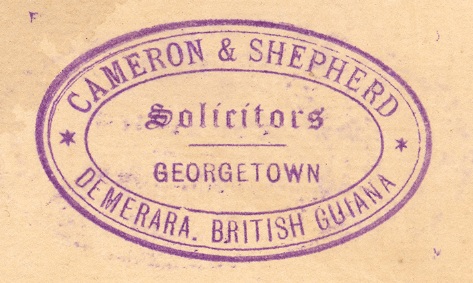
Above: Four of the old Cameron and Shepherd stamps as imprinted in books and on pleadings.
Right: The partners of Cameron and Shepherd at work in 1921. Mr Cameron has written “Filed on 10 Nov 1921,” and his signature on the specially th indorsed writ can be seen on the inside just behind those words and again further down. Mr H C Humphrys was probably designated to go to Court to obtain judgment on 19 November but he must have been unable to do so as he wrote: “Mr Cameron! Please appear and obtain judgment this morning. HC. 19.11.21”. Mr Cameron probably had also another commitment because we see that G J de Freitas KC saved the day by appearing in Court and obtaining judgment, as he wrote: “Judgment by consent for $210 with costs. G. J d F. 19.11.21”. The“Cameron & Shepherd Legal Practitioners” stamp was imprinted at the bottom but it has not been reproduced here.
For some time after the expansion of the partnership, the stamp imprinted on documents and in books was “Cameron and Shepherd, Legal Practitioners” but this change was temporary, and the stamp reverted to “Cameron and Shepherd, Solicitors”, until around 1980, when the professions of solicitor and barrister were formally fused and the stamp became and still is “Cameron and Shepherd, Attorneys-at-Law”.
Mr Shepherd retired from the partnership on 1 April 1924. His share in the partnership was bought from him by Hubert Chester Humphrys and George Rodhouse Reid. Mr Reid took Mr Shepherd’s place as solicitor in the partnership arrangement.
Mr Shepherd had left India, where he was born, at the age of four. After attending Dame School in Boulogne, France he went to a school in Chiswick, then on the outskirts of London, and served his articles of clerkship in London before coming to British Guiana in 1901. In June 1909 he married Adelina Joanna Weiting at St Michael’s Cathedral in Bridgetown, Barbados. Miss Weiting was the daughter of Karl Weiting, co-founder of Weiting and Richter Ltd (established in 1871, and one Guyana’s oldest companies). The couple had one daughter, Betty Eleanor Grace, who was born in England on 7 October 1911. She is married to Maurice Jones, an American businessman and now resides in Barbados.

After his retirement from Cameron and Shepherd, Mr Shepherd went to England with his wife and daughter. They settled in Cornwall, at Trerice Manor, St Newlyn East, near Newquay. Because of ill health, Mr Shepherd was later forced to sell Trerice Manor and return to the West Indies with his family. They lived at Collection House, St Peter, Barbados, until Mrs Shepherd became ill and died. Following the sale of Collection House, Mr Shepherd bought a small property called Orange Grove in the hills above Kingstown, St Vincent. This property was isolated and had no telephone. Mr Shepherd subsequently became ill and was brought back to Barbados to live with his daughter and her family. He died in February 1971 at the age of 93.
On 1 May 1924, Joseph Edward de Freitas was employed as managing clerk at Cameron and Shepherd. He was a son of Dr José Manuel de Freitas, the elder brother of Guilherme José de Freitas.

Left: Joseph Edward de Freitas c 1927. He was a member of the Georgetown Football Club, which played football for British Guiana against other territories. (Photograph courtesy Mr J A King).nsent for $210 with costs. G. J d F. 19.11.21”. The“Cameron & Shepherd Legal Practitioners” stamp was imprinted at the bottom but it has not been reproduced here.
On 12 June 1926, William Stuart Cameron died. At the time of his death he was the senior partner and in addition to paying to his estate his share in the partnership, the firm paid £1000 to his heirs “in respect of goodwill”. In 1922 the Law Reports of British Guiana recommenced publishing the names of solicitors on record in the cases which were reported from 1922 and as it had in 1892, Mr Cameron’s name appeared frequently. The last reported case in which Mr Cameron appeared on record as solicitor was Smith v The Consolidated Rubber and Balata Estates [1925] LRBG 109, heard in May 1925 with decision given in July of the same year.
Mr Cameron was educated at Queen’s College in British Guiana and later in England at St Leonard’s School, St Leonards-on-Sea, Sussex. In November 1878, he became articled to a London firm of solicitors and in 1883 passed his final solicitor’s examination with honours. His admission to the Supreme Court of Judicature of England took place the following year, but he did not return to British Guiana until two years later. On his return he was admitted to practice in British Guiana.
Mr Cameron entered into a barrister/solicitor partnership, known as Dargan and Cameron, with Patrick Dargan in December 1891. Mr Dargan was a barrister, who had been admitted to practice in British Guiana on 5 July 1887. It is not known when the partnership of Dargan and Cameron ended, but the two rarely appeared apart in their cases, which are reported in the newspapers up to early 1899. Later in 1899, the two appeared apart frequently. Patrick Dargan rose to great prominence in his profession and in politics in British Guiana, and his name is still well known. A R F Webber referred to him in A Centenary History and Handbook of British Guiana (1931), at page 331, in the following terms:
On the 21 February, 1908, Patrick Dargan a creole of mixed race of outstanding political genius, and known to the present generation as the greatest champion of the people, died somewhat suddenly. Dargan was a barrister-at-law, who, without influence and without means, had fought his way up to the topmost rung in his profession. Fighting under a Constitution that gave scope for little except obstruction and criticism, he found them his only weapons. For the fourteen years he spent in the legislature he was the outstanding political figure of the day and overshadowed everyone else in the imagination of the people. In his professional capacity he had been engaged in every cause celebre of his time, on one side or the other side, and it is noteworthy that the planters, of whom he was the most trenchant critic in the legislature, engaged him to bring the famous injunction case against Sweetenham [the Governor] in 1904.
Between 1897 and 1904, Mr Cameron represented the county of Demerara in the Combined Court as financial representative. He also represented the South East division of Essequibo for a short period commencing in 1907.
It is believed that Mr Cameron’s first wife died around 1901. He remarried some years later, his second wife being Mabel Albertha Weeks. A son from his second marriage, Walter Stuart Cameron, born on 11 October 1918, was listed in Personalities Caribbean (Second edition, 1965) as the Deputy Director of the Posts and Telecommunications Department of British Guiana and in the Dictionary of Caribbean Biography (First edition, 1970) as the Acting Postmaster General of Guyana from 1965 to 1968 and the Acting Registrar General of Guyana from 1969. He now resides in the United States with his wife Dorothy. The other children of Mr Cameron’s second marriage, who live abroad, are Lucille Hazlewood, Iris Persaud and Hugh Cameron.
In his Will, Mr Cameron expressed the wish to be buried at sea. The Colonial Transport Department allowed the SS Queriman to be used for that purpose on Sunday, 13 July 1926. The Daily Argosy for that date reported that Mr Cameron left two daughters – Mrs Jack Duncan and Mrs Claude King, both of whom were out of the colony.

After Mr Cameron’s death, Joseph Edward de Freitas, who had been admitted to practice as a solicitor in 1924, took Mr. Cameron’s place in the firm. Mr de Freitas became junior partner on 15 December 1931, joining Guilherme José de Freitas, King’s Counsel, Hubert Chester Humphrys, barrister and George Rodhouse Reid, solicitor.
Left: Joseph Edward de Freitas (Daily Chronicle, 24 October 1972)
Hubert Chester Humphrys was appointed King’s Counsel in November 1937. The last reference to him in the Law Reports of British Guiana without the initials KC following his name was in the
case of C T Coltressv C E M Coltress [1931 - 1937] LRBG 523, heard in March and April 1937 with decision given in September of the same year. The first reference to Hubert Chester Humphrys with the initials KC appearing after his name was in the case of S S Khouri v Isabel Da Silva [1938 - 1940] LRBG in which decision was given in January 1938.
Right: Hubert Chester Humphrys (Daily Chronicle, 2 July 1939). Below the photograph is Mr Humphrys’ signature as inscribed on articles of partnership of Cameron and Shepherd dated 15 December 1931.
On 11 July 1938, Guilherme José de Freitas died. The contemporary newspaper reports of his death described him as the Leader of the Bar.
Guilherme José de Freitas was born on 29 August 1874, the second son of Mr José Fransisco de Freitas and Mrs Maria José de Freitas, nee de Mendonca. He received his early education at Campolide College, Lisbon, reported to be the leading Catholic school in Portugal before the 1910 Revolution, through which the Portuguese monarchy was deposed. Mr de Freitas subsequently attended Stonyhurst College, England – founded in 1593 – from 1886 to 1892.

After leaving Stonyhurst College, Mr de Freitas joined the Honourable Society of the Middle Temple, where he was called to the Bar in June 1896. He was admitted to practice at the Bar in British Guiana in September 1896.
In 1913, Mr de Freitas was appointed King’s Counsel, although the Daily Argosy for Tuesday, 12 July 1938 reported that he had not applied for the honour. He was also appointed a Justice of the Peace.
Between 1910 and 1920, Mr de Freitas acted on numerous occasions as Solicitor General of British Guiana. He was the last Acting Solicitor-General of British Guiana between 1917 and 1920, when the position was renamed Assistant to the Attorney General. It did not revert to the original name until twenty-four years later, in 1944. Dr Mohamed Shahabuddeen notes in The Legal System of Guyana, at page 385, that it was alleged that “the real object of the change was to discourage a very capable practitioner, who was otherwise in the running for the appointment, by substituting a title which he would not have agreed to take”.
Right: Guilherme José de Freitas (Daily Argosy, 12 July 1938) probably while he was acting as a Puisne Judge.
On 6 March 1922, while a partner at Cameron and Shepherd, Mr de Freitas was appointed for the first time to act as a Puisne Judge and he continued in that appointment for the rest of the year. The Daily Argosy for Tuesday, 12 July 1938 reported that he was offered the substantive appointment but did not accept it. Mr de Freitas also acted as a Puisne Judge in 1932 and 1934. From 1921 to the time of his death, Mr de Freitas was the president of the Legal Practitioners Disciplinary Committee and he was elected the first president of the Law Society of British Guiana, which was formed shortly before his death.
The following is an extract from Mr de Freitas’s obituary in the Daily Argosy of Tuesday, 12 July 1938:

Mr de Freitas took part in a number of outstanding cases. He had the honour of appearing with Sir John Simon before the Law Lords of the Privy Council in the case of the Demerara Bauxite Company versus Mrs Hubbard. He also appeared in the Courts of Barbados with the late Mr S J van Sertima in the famous Kinch-Stewart litigation. Mr (now Sir) Lennox O’ Reilly was also a counsel in that case.
In British Guiana, Mr de Freitas appeared in nearly every important case during his career. He was Counsel in some famous Admiralty cases. In 1912 he was in the $7,000 collision case brought by the owner of the Barbados schooner Lettie M Hardy against the owners of the SS Sargasso. Mr de Freitas represented the latter. Then he was in the action by the owners of the fishing boat All Peace against Captain Kirby of the SS Guiana. This collision occurred in the vicinity of the Lightship. Mr de Freitas represented the Guiana and won.
There was a romantic flavour in this case. The Guiana had come from New York and was anchored in the daytime near the lightship. The fishing boat was also anchored near the lightship. The Guiana weighed anchor and started to come into port, but collided with the small fishing boat and sank it. The two occupants were thrown into the water and disappeared from view. While the crew of the Guiana which had fortunately been stopped, were anxiously looking for the two fishermen, they heard a sound from the stern of the steamer. The two men were singing the hymn “Nearer my God to Thee”. Investigation disclosed that they were sitting on the propellor of the steamer.
In 1926 Mr de Freitas appeared in the case in which the owners of the Barbados schooner Lilian Barnes after a collision with a barge Mahaica, owned by Messrs Sprostons, Ltd, sued the company for $5,000 damages. There was a counterclaim. The late Mr P N Browne KC associated with Mr C R Browne, appeared for the Lilian Barnes, while Mr de Freitas with Mr B B Marshall defended the owners of the Mahaica. Mr de Freitas won. The trial of this action occupied twenty-one days before Mr Justice Douglas.
There was an appeal to the West Indian Court of Appeal in 1927. This court was constituted by Mr (later Sir) Anthony de Freitas, then recently appointed Chief Justice of British Guiana, Mr Justice Walton of Grenada and Mr Justice Furness of Barbados. At the hearing of the appeal, Mr P N Browne and Mr C R Browne had with them Mr J A Luckhoo KC. Mr de Freitas and Mr Marshall won again. The Lilian Barnes was dismissed with costs.
Mr de Freitas was among the counsel engaged at the Inquiry conducted by the late Chief Justice H K M Sisnett of Honduras, then a Magistrate in this colony, following the Rose Hall Riots in 1913. After the 1924 riots in Georgetown, Mr de Freitas appeared with Mr P N Browne KC to represent the Police Department.
Other famous cases in which Mr de Freitas appeared were in the Ethel-A-Do action for the recovery of $500 as prize money at the Bel Air Park Races and the Noitegedacht Murder case [January, 1919]. Mr de Freitas was in this case Solicitor General and with the Crown Solicitor Mr J A King [the grandfather of the present partner], advised the Attorney General, Sir (then Dr) J J Nunan. This case was the only Trial at Bar [formerly, a trial before several Judges and a Jury] which has ever taken place in British Guiana. Six persons were eventually hanged. The three presiding Judges were Sir Chas. Major, Chief Justice, Mr Justice Berkeley and Mr Justice Hill. Some time later the chief witness for the Crown hanged himself from a tree by a grass rope. That tree was cut down and the roots dug up.
When Mr de Freitas was discharging the duties of Crown Prosecutor at the Demerara Criminal Sessions he displayed that spirit of chivalry which was a distinguishing feature of his character. The case was one in which a popular City dispenser was charged with receiving stolen goods. Charged with this dispenser was another man who suddenly seemed to have lost confidence in his counsel and in the middle of the case asked the latter not to continue to represent him. The indignant barrister immediately intimated to the Court that he was withdrawing from the case. When the reason was disclosed Mr de Freitas, the Crown Prosecutor, did all he could to persuade the barrister to continue to defend the man. “Go on,” Mr de Freitas pleaded, “the man is mad. He does not understand you. Go on.”
In recent years Mr de Freitas was engaged in the case of Henery-Davson, which lasted for 40 days. He was also in the Gonsalves “Demerara Life” case which lasted 30 days and in which he cross examined Mr Gabriel Gonsalves for 9 days. He submitted, after the cross examination, that there was no case, and the action was dismissed. On very many occasions Mr de Freitas was paid very high compliments from Chief Justices and other Justices.
The last case reported in the Law Reports of British Guiana in which Mr de Freitas appeared on record was M Mendonca and Company v J L Griffith [1931-1937] LRBG 557, heard in June and September 1937 with decision given in October of the same year. Mr de Freitas’s first appearance on record in the Law Reports of British Guiana was in the case of Santos v Mendonca [1896] LRBG 89, heard on 26 November 1896.
About Mr de Freitas’s life outside of the law, The Daily Argosy for Tuesday, 12 July 1938 reported:
Mr de Freitas was a man of a very modest disposition and repeatedly declined to hold offices offered to him. The few offices he accepted were practically forced upon him. Except for the period of his appointment in 1930 by the Government to be a member of the Executive and Legislative Councils, Mr de Freitas had nothing to do with the political life in the colony.
Mr de Freitas was a tennis player in private. He was also an ardent racing man. His colours were cerise and grey. With the Hon F Dias OBE, he was part owner of Reproach which won several cups and prizes. He was a Steward of both the Bel Air Park Club and the D’Urban Race Club. He was also keen on private poultry rearing.
Mr de Freitas was a staunch Roman Catholic. He was a Vice President of the Catholic Guild Club and was one of the first committee members of the Catholic Cathedral building fund.
A number of tributes were made in the High Court and the magistrate’s court on Mr de Freitas’s death. The persons who made tributes in the High Court in Georgetown were Mr J H B Nihill KC, Attorney General; Mr J A Luckhoo KC; Mr S L van Batenburg Stafford; Mr E A W Sampson and Mr Justice Langley. In the City Magistrate’s Court, Mr C A Burton; Hon Francis Dias OBE; Mr Carlos Gomes; Inspector Edmonds and His Worship Mr A V Crane SM paid tribute to Mr de Freitas and in the High Court in Berbice, Mr E M Duke, Crown Counsel and Mr P M Benson. In the Albion Magistrate’s Court tributes were made by Mr Mungal Singh; Hon E A Luckhoo; Hon J A Eleazar; Mr V D P Woolford and His Worship Mr A C Brazao SM (acting).
Mr Justice Langley said in the High Court:
Mr G J de Freitas was to me a friend and I know I can say the same thing for Sir Bernard Crean and Mr Justice Verity. We all had a very high respect for his ability and for the manner in which a man in his position conducted himself.
Mr de Freitas belonged to a profession with very high ideals and I have never known of any man who so nearly attained them as he did. He was a very humane man and his understanding of humanity was one of his greatest qualities. This is one of the tributes which must be paid to him. His sympathy, combined with his learning and his knowledge of realities made him an outstanding man.
I agree entirely with the view that he was an ornament to the Bar of British Guiana and the West Indies. He undoubtedly had a great knowledge of the Law and was always ready to place it at the disposal of the Bench or his brother practitioners.
Now, he has passed from the realm of suffering – suffering which he bore so gallantly during the last few months – and our sympathy goes out to his widow and other relatives. They will undoubtedly find some consolation in the tributes which have been paid to his memory to-day.
Mr de Freitas’s passing reminds me of the passing many years ago of Capt Oates who died at the South Pole. I met his nephew in London shortly after the news arrived there and on offering him my condolence he said: “I have no feeling other than pride.”
Gentlemen, that is how I feel today on hearing of Mr de Freitas’s death. I have no feeling other than pride in my friendship with Mr de Freitas. I propose to adjourn the Court for ten minutes as a mark of esteem.
After Mr de Freitas’s death his widow, Agnes Cecelia de Freitas, nee Psaila, in her capacity as the sole executrix of Mr de Freitas’s Will, on 15 June 1940 sold his undivided one-third share in the property situated at 2 High Street to his nephew, Joseph Edward de Freitas.
George Rodhouse Reid retired from the partnership in 1941. He was born on 11 May 1876 at Surrey, England and was educated at Whitgift, St Dunstan’s and London University. He took honours both in his Law Society examinations and in his degree from London University.
Right: George Rodhouse Reid (Daily Chronicle’s Who’s Who in British Guiana, c 1942). Below the photograph is his signature taken from articles of partnership of Cameron and Shepherd dated 15 December 1931.
Mr Reid held the position of managing clerk at Wilkinson and Marshall, Newcastle, England from 1897 to 1900. Between 1900 and 1914 he was a partner at Child’s, Harling and Co, London. He was a member of the Royal Navy Volunteer Reserve between 1914 and 1919 and a stipendiary magistrate in British Guiana from 1920 to 1924.
In 1924, Mr Reid became a partner at Cameron and Shepherd, a position he held for the next seventeen years. Mr Reid had been married in 1909 to Miss Stewart and had two daughters. During his sojourn in British Guiana, he was appointed a Justice of the Peace and sat on numerous commissions including those on education, river navigation, partition of village lands and coronation committees. He also served as chairman of the Rupununi Development Company Ltd and the Demerara Meat Company Ltd.
On Mr Reid’s retirement in 1941, two solicitors became partners in the firm. They were Hugh Cecil Benjamin Humphrys, the son of Hubert Chester Humphrys, and Herman William de Freitas, the younger brother of Joseph Edward de Freitas.

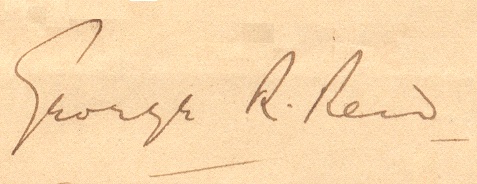
On 3 January 1950 George Rodhouse Reid, who was by then living in London, England, sold his undivided one-third share in the property situated at 2 High Street to the two partners admitted in 1941.
Below: Joseph Arthur King c 1953. (Photograph courtesy Mr J A King)

On 22 June 1954, Joseph Arthur King was admitted by acting Chief Justice Boland to practice at the Bar of British Guiana. His petition for admission to the bar was presented by Mr H C Humphrys and he thereafter joined Cameron and Shepherd as an associate. Mr King had attended the Honourable Society of Lincoln’s Inn and was admitted to practice as a barrister in England and Wales on 18 May 1954. He became a partner in the firm on 31 December 1955.
Hubert Chester Humphrys went into partial retirement on 31 December 1956. He left British Guiana to reside in Barbados some time shortly afterwards, with the intention of returning to British Guiana from time to time to advise longstanding clients.
On 1 January 1957, James Hunter Shaw Elliott, a barrister who had practiced at the Common Law Bar in London, was recruited as the second partner in the firm (Hubert Chester Humphrys remained the first partner until his death) through Bookers, because of the large amount of legal work, including litigation, in which Cameron and Shepherd represented the company.
Mr Elliott was born on 17 November 1916 at Belfast, Northern Ireland and held a Bachelor of Civil Laws degree from Lincoln College, Oxford (1939) as well as a Bachelor of Laws degree from Queen’s University, Belfast. “The Caribbean - Who, What, Why” (1965), in its entry for James Hunter Shaw Elliott, lists that he was a contributor to Halsbury’s Laws of England, Northern Ireland edition, an Editor of Halsbury’s Statutes of England and a contributor of articles to legal journals. Mr Elliott was a solicitor before qualifying as a barrister.
Right: James Hunter Shaw Elliott on his admission to the Inner Bar (Evening Post, 24 June 1960). Below the photograph is his signature dated 15 December 1950, taken from a brief brought from England in the matter of Secura Incubator Company Ltd v Neil Ernest Mounsey, which was heard in the King’s Bench Division.
Mr Elliott was appointed Queen’s Counsel in British Guiana along with Messrs Joseph Oscar Fitz Haynes, Bertrand Oswald Adams and Linden Forbes Sampson Burnham on 24 June 1960. He remained a partner at Cameron and Shepherd until 31 December 1963, when he retired from the partnership and returned to England.
While in British Guiana, Mr Elliott was widely regarded by the Bar as one of the most able barristers in the colony in civil and commercial litigation. He died on 25 October 1995 at the age of 78.
On 25 July 1958 Hubert Chester Humphrys died in Barbados at the age of 67. Mr. Humphrys was born on 12 July 1891 at Plantation Greenfield, East Coast Demerara, British Guiana, to Mr Henry L Humphrys, a planter, and Mrs Elizabeth Humphrys, nee Erskine, who was born in Canada. Educated in British Guiana at Queen’s College, Georgetown, he was called to the Bar from the Honourable Society of Lincoln’s Inn on 18 November 1912. He returned to British Guiana shortly thereafter and was admitted to practice in the Courts of the colony.
In December 1914 Mr Humphrys married Ethel Marion Pringle, also of British Guiana. In 1928, Mr Humphrys was a member of the British Guiana Constitution delegation to London. He became a member of the Court of Policy for the Eastern Demerara constituency in November, 1926 after a successful election petition (reported at [1926] LRBG 109), that he brought against another barrister, Joseph Sydney McArthur. He continued until 1930 as a member of the first Legislative Council of British Guiana, which replaced the Court of Policy in 1928. He was also a member of the Legislative Council from 1935 to 1947.
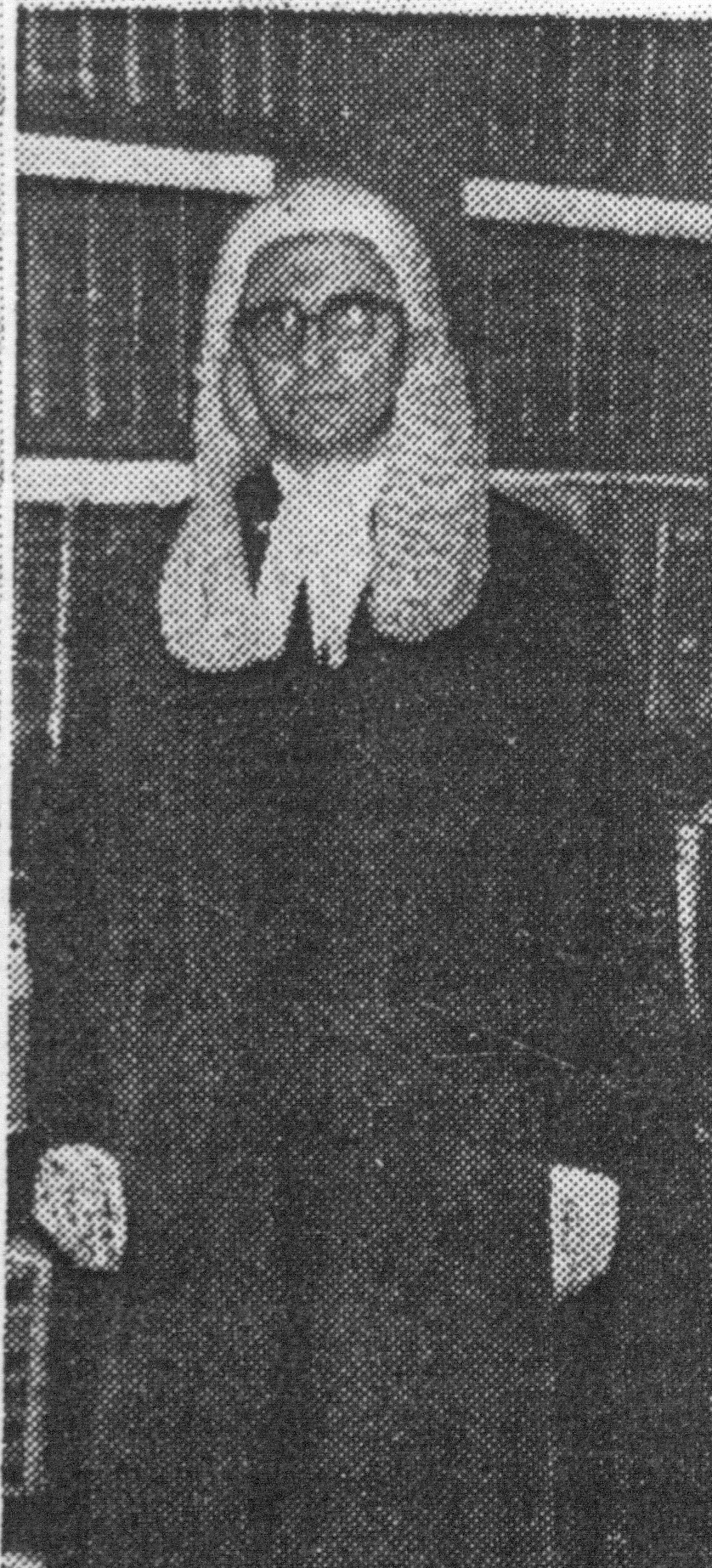
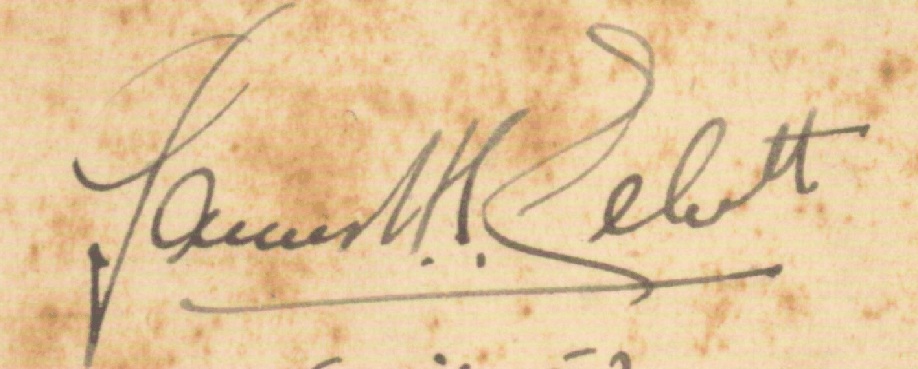
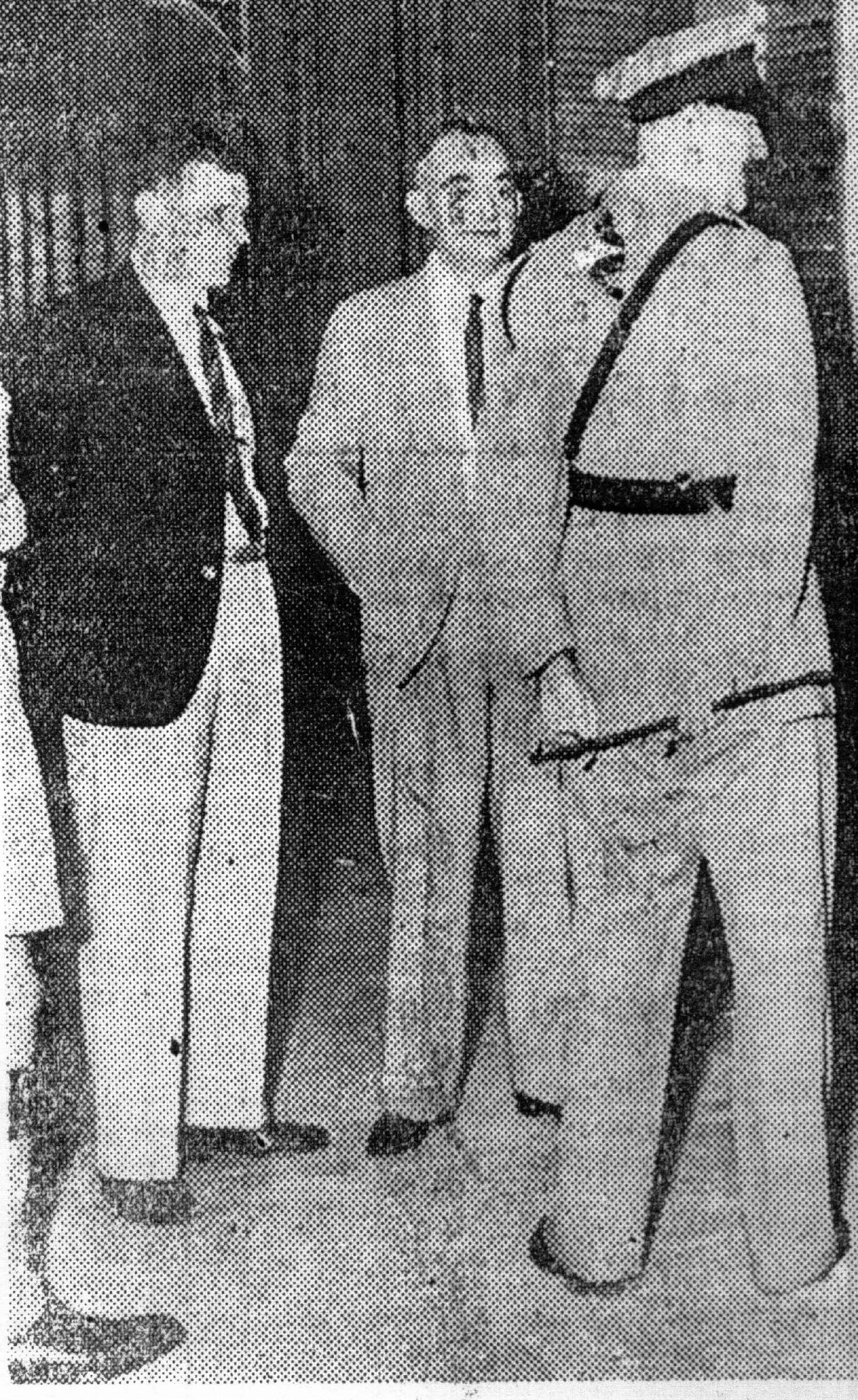
Left: Hugh Cecil Benjamin Humphrys standing next to his father Hubert Chester Humphrys in Court at the Enmore Strike Enquiry in 1948. To their right is County Superintendent Roberts. (Daily Chronicle, 29 June, 1948).
Right: Hubert Chester Humphrys as a young barrister. (Photograph courtesy Mrs Joy Humphrys)
Mr Humphrys was president of the British Guiana Law Society, JudgeAdvocate to the British Guiana Volunteer Force, a member of the British Guiana Rice Marketing Board and a director of the Pure Cane Molasses Company (BWI) Ltd. He also sat on several government commissions and in 1942 was made an Assistant Superintendent, Special Constabulary, ARP. He was also president of the Georgetown Golf Club, the Chancellor of the Diocese of British Guiana and president of the Society for Prevention of Cruelty to Animals.
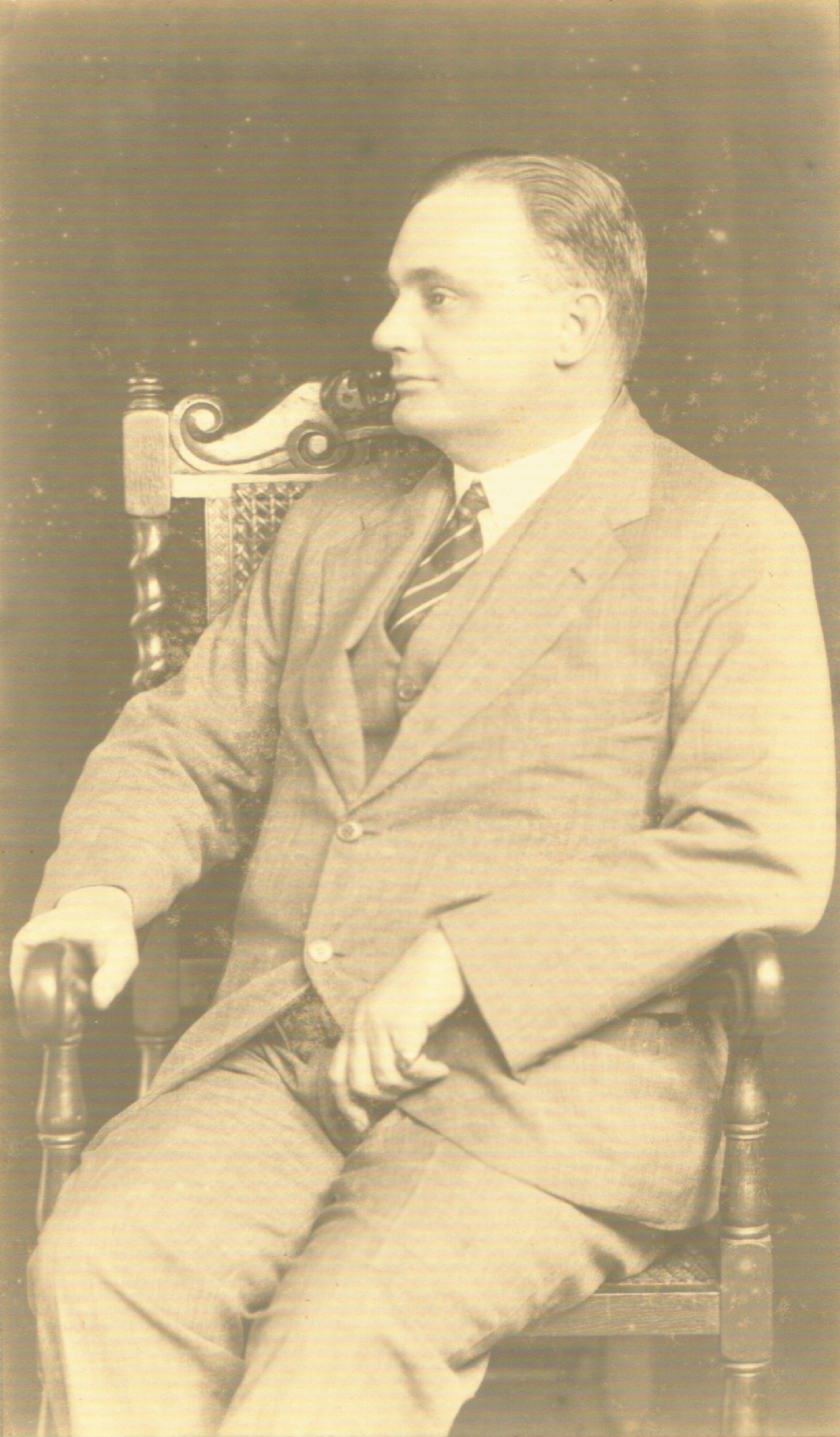
The first reference in the Law Reports of British Guiana made to a “Humphrys” is in Wilson v Kenswil [1914] LRBG 57, in which he appeared as junior counsel to Mr McLaurence Ogle. The last reported case in which he appeared on record was Rose v Hanoman [1957] LRBG 25, which was heard in January, 1957 with decision given in the following month.
Following the death of Mr H C Humphrys, the Chief Justice, Sir Frank Holder CMG, said in a special sitting of the Full Court in reference to him:
He was as you all know a member of the legal firm of Messrs Cameron and Shepherd, Solicitors. His services were in great demand and, in fact, for many years he appeared as Counsel in most of the important litigation, as Mr Luckhoo has said, on one side or the other. This is not surprising. He had an extensive knowledge of the Law and a comprehensive grasp of legal principles. He was industrious and worked hard in the preparation of his cases which he presented to the Courts with great care and clarity, with directness and without rhetoric. He wasted no time in circumlocution but went straight into the points of the case and dealt with the essential issues – with the facts and with the law.
Hubert Humphrys was a plain, blunt man who did not shrink from expressing his views, however unpalatable or unpopular they might be; he was a man who had the courage of his convictions. He was a very capable lawyer and a successful advocate. Reference to the Law Reports of the West Indian Court of Appeal and of this Colony show how extensive was the practice he acquired and the many cases of importance in which he appeared. But his success came from hard work, honesty of purpose, frankness in expression and dependability. He was appointed a KC in the year 1937, which he had won by his merit.
Apart from his legal work, he was for some years a member of the Legislative Council, as Mr King has said. When I sat in the Council in 1945 he was still a member – a forceful speaker, a resolute and keen debater. His interests were not limited to law and politics. He was for some time Chancellor of the Diocese of Guiana, and one of his outstanding qualities was his great love for animals. Surely you must have seen him, as I have, walking with his dogs to which he was very much attached. For several years he was the President of the Society for the Prevention of Cruelty to Animals. He did his utmost for the care and protection of our dumb friends and was largely responsible for the building of the Animal Clinic in Robb Street, near to St Barnabas’ church, a few years ago.
He was also a keen tennis player and played golf also. Every year he went up to the Abary for a short time to shoot and to fish. He was a man of great sincerity and courage; a man of strong convictions who was never afraid to express his views. Oft times I disagreed with his point of view but respected him for his fearlessness and straightforward manner. He was a man in whom I had an absolute trust.
With his death there passes a familiar figure who played a conspicuous part in the life of this community for many years. The age in which he blossomed and flowered is now fading away. A new world, a new generation with new ideas new concepts has arisen, but we cannot but be mindful of those strong and able personalities who formed the solid foundation upon which much that is worthy – much that is valuable in this country – has been built. He may have been a ‘praiser of his time’ Laudator temporis acti, but like most of us he was a creature of his time and generation. He strove with might and main for the things which he cherished and which he felt were for the good of this Colony.
He was a kind man, a loyal friend, a devoted husband and a loving father, and indeed, a great hearted gentleman. He has reached his journey’s end and has entered into his rest. And now this Court where he spent so much of his working life – 44 years – in its service – pays a deserving tribute for all his sterling qualities and all that he has done in the Courts of this Colony. We shall see him no longer but he will long be remembered as a fearless advocate and an indefatigable worker in the interests of his clients – one who always endeavoured to assist the Court in every way and who at all times maintained the highest traditions of the profession of which he was such a splendid ornament. His example may well be emulated by the younger members of the Bar.
Tributes were also made in the Georgetown High Court by Mr C Lloyd Luckhoo QC, President of the Bar; Mr A M I Austin, Attorney General and Mr A G King. In the City Magistrate’s Court Mr A M Edun, Acting Legal Draughtsman; Mr E V Luckhoo; Sub Inspector Fred Wills and Senior Magistrate Mr M S Fitspatrick paid tributes to Mr Humphrys, as did Mr J T Clarke, senior member of the Bar; Mr V D P Woolford MBE and Mr Justice Stoby in the Berbice High Court.
Mr J A King makes reference to Mr Humphrys’ love of animals, and more especially of dogs, by noting that Mr Humphrys had a mongrel by the name of Bobby, who sometimes sat on the floor beside Mr Humphrys’s desk while he was at work. On one occasion while Mr King was speaking to Mr Humphrys in his office, Bobby growled at him and then bit and tore his trousers. He notes that when he complained, Mr Humphrys, who made no reaction to the attack, said “Well, Joe, you must have stepped on his tail”.
But, Mr King was not the only person who got on the wrong side of Bobby. In an undated letter sent sometime in the 1950s by Mr W Ramdass to Mr Herman de Freitas, Mr Ramdass wrote:
Dear Sir,
I regret to have to inform you that yesterday morning I went in your office to settle the balance of fees attending the mortgage passed by me to the Demerara Life and was attacked by a fierce bull dog, which I am informed, is belonging to your firm. I was proceeding to the cashier (Miss Gomes), when not noticing this monster lying on the floor, my foot touched him slightly and it sprang upon me like a hungry panthor. How I escaped injury from him, is a matter of mystery. It made a grip at my foot, but as luck would have it, it did not get at my flesh. With its anger surging to boiling point, it grabbed my trousers’ foot and tore at it with vengeance and great passion.
Sir, I wish you would realise how dangerous it is to have a bloodhound like that to be left loose and at large in the office during hours when persons have to call there on legitimate business.
I, however, must confess to you that I suffered a tremendous shock from sheer fright. My pants had to be condemned and I am asking you to be good enough to give me something, say about $8:- to cover my loss, though the cost of my pants is far more than that.
Thanking you for your early reply.
Yours faithfully,
(sgd) W Ramdass.
Mr King’s appended note to a copy of this letter reads:
H C Humphrys QC the owner of the dog, Bobby was somewhat annoyed that the dog was called a ‘bloodhound’, why I don’t know as he was a dreadful old fleabag of indeterminate breed. H C’s reaction was “He must have trod on Bobby’s tail”. Quite likely, as I did that once in his off ice and only my lightning reflexes and, honed by terror, saved my leg. Like Mr Ramdass, however, my trousers bore honourable scars!
Below: Hugh Cecil Benjamin Humphrys on 2 September 1957. (Photograph courtesy Mrs Joy Humphrys).
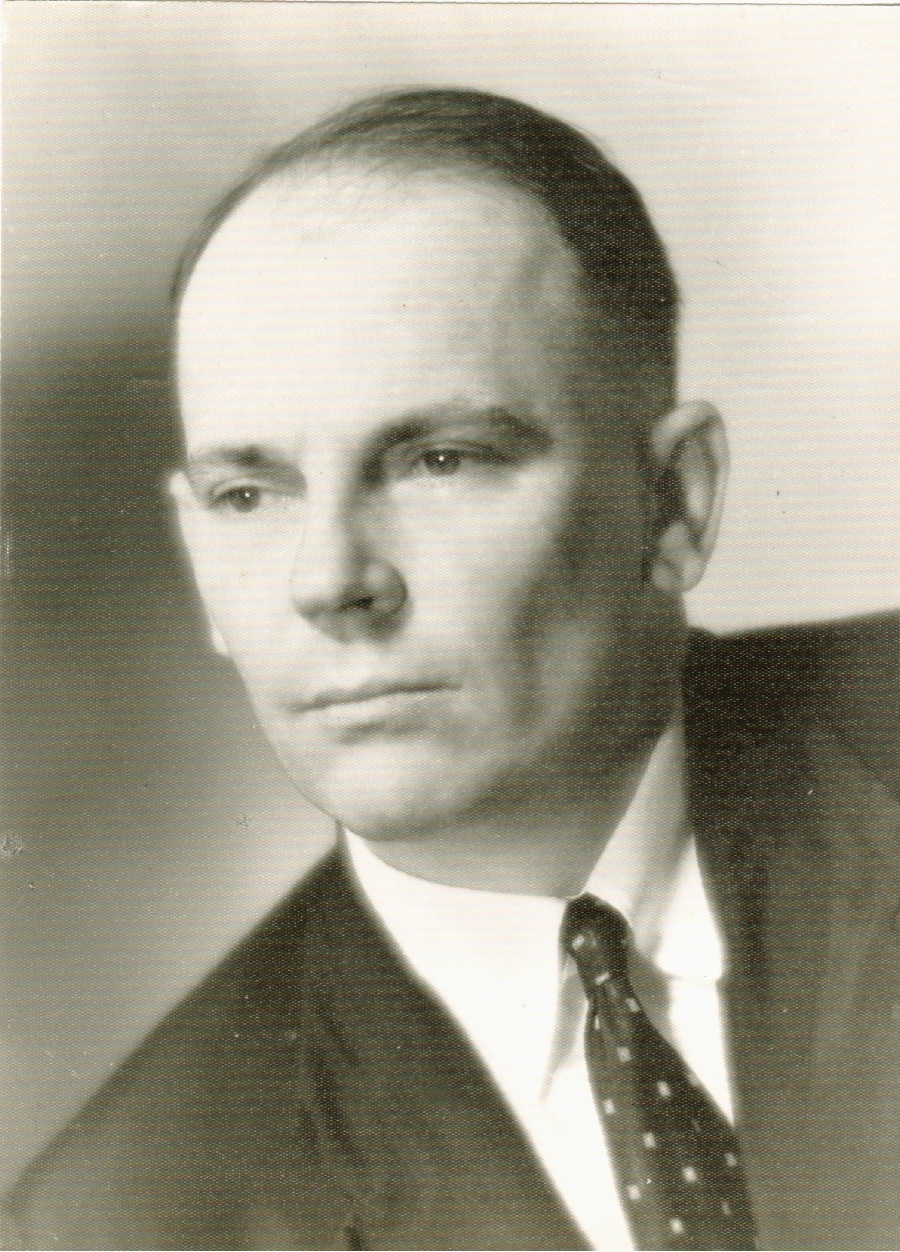
Hugh Cecil Benjamin Humphrys left the partnership in 1962. He was born on 10 February 1916 in British Guiana, the only child of Hubert and Ethel Humphrys, nee Pringle. Known as ‘Tad,’ he was educated at Queen’s College and St Stanislaus College, Georgetown, British Guiana and at Cranleigh Public School in Cranleigh, Surrey, England. He studied for his solicitor’s qualifications in England in the early 1930s and was admitted to practice as a solicitor in British Guiana in 1939.
Right: Hugh Cecil Benjamin Humphrys standing at left showing a document to L M F Cabral, barrister, with Jai Narine Singh, barrister, in the immediate background, at the Enquiry into the shooting of five workers, now known as the Enmore Martyrs, at Enmore Estate. (Daily Chronicle, 24 July 1948)
During World War II Hugh Cecil Benjamin Humphrys joined the army in British Guiana and served in Trinidad in the Sea Defences, rising to the rank of major. He also served as aide de camp to Governor Gordon Lethem at Government House in Georgetown during the war. In 1947 he met Joy Muriel Woolward, who was visiting Georgetown from Montreal, Canada, and they were married in Canada in April, 1948.

Mr Humphrys, who was president of the Royal Agricultural and Commercial Society of British Guiana in 1957, migrated from Guyana to Barbados in 1962. In 1964 he left Barbados for England, where he worked in a firm of solicitors, Tilbrook Hunt and Locke in Woking, Surrey, until his retirement in 1986. Hugh Cecil Benjamin Humphrys died at the age of 76 on 17 October 1992. Both Mr J A King and Mr David de Caires have commented on Mr Humphrys’s honesty, Mr King saying that he was the most honest person he ever met.

Left: Gilbert McRae Farnum on his admission to the Inner Bar on 11 January 1967.(Guyana Graphic, 12 January 1967).
On 1 July 1966 Gilbert McRae Farnum, barrister, became a partner in the firm. Mr Farnum was born on 9 February 1910 in Georgetown, British Guiana, to Ernest Gilbert Parry Farnum and Mrs Farnum, nee Hutson.
He took his early education at St Stanislaus College and Queen’s College, British Guiana, where he won the Guiana Scholarship for 1928. In 1929 he entered Edinburgh University with the intention of studying medicine. When he decided to read law instead, he enrolled at Liverpool University, where he was awarded a Bachelor of Laws degree with honours in 1932.
Mr Farnum then joined the Honourable Society of Gray’s Inn, where he passed his Bar finals in 1933. He was admitted to practice at the British Guiana Bar in 1939. In September 1942, he married Miss Joan Smith.
Mr Farnum practiced at the private Bar between 1939 and 1943 and served as a magistrate from 1943 to 1946. In 1946 he joined the Attorney General’s Chambers as Crown Counsel and Legal Draftsman. He was the Solicitor General of British Guiana from 1953 to 1959, on a number of occasions acting as Attorney General. He was appointed Queen’s Counsel on 31 December 1966 and was admitted to the Inner Bar, along with Messrs John T Clarke and Frederick Ramprashad, at a special sitting of the Full Court on 11 January 1967. These three were the first Queen’s Counsel appointed after Guyana’s independence.
On the admission to the Inner Bar of Mr Farnum, the Attorney General, Mr (now Sir) Shridath Ramphal said of Mr Farnum:
Throughout all these years, whether in private practice or as a Law Officer of the Crown, his forensic skill founded on a special expertise in cross-examination and a prodigious memory for authority, has won him the admiration of his profession and there are few members of the Bar who have been better liked than Gilbert Farnum.
He has had many triumphs in these Courts and his admission to the Inner Bar has been widely acclaimed by the profession. He brings to his new status as one of her Majesty’s Counsel a deep understanding of the problems of the profession and a rich storehouse of experience from which we might all draw in finding solutions to them.
Mr Farnum was said to have been a brilliant cross-examiner, whose talent in that branch of advocacy was often under-appreciated or unrecognised. He was a partner at Cameron and Shepherd until his retirement on 31 December 1971. Mr Farnum died on 7 March 1987.
Upon Mr Farnum’s retirement, Desmond Arthur O’ Connor, solicitor and Salahuddeen Mansoor Ahmad Nasir, solicitor, became partners. Like James Hunter Shaw Elliott before him, Mr O’ Connor was recruited through Bookers because of the large amount of legal work in which Cameron and Shepherd represented them. Unfortunately, Mr O’ Connor died within a year of becoming a partner.
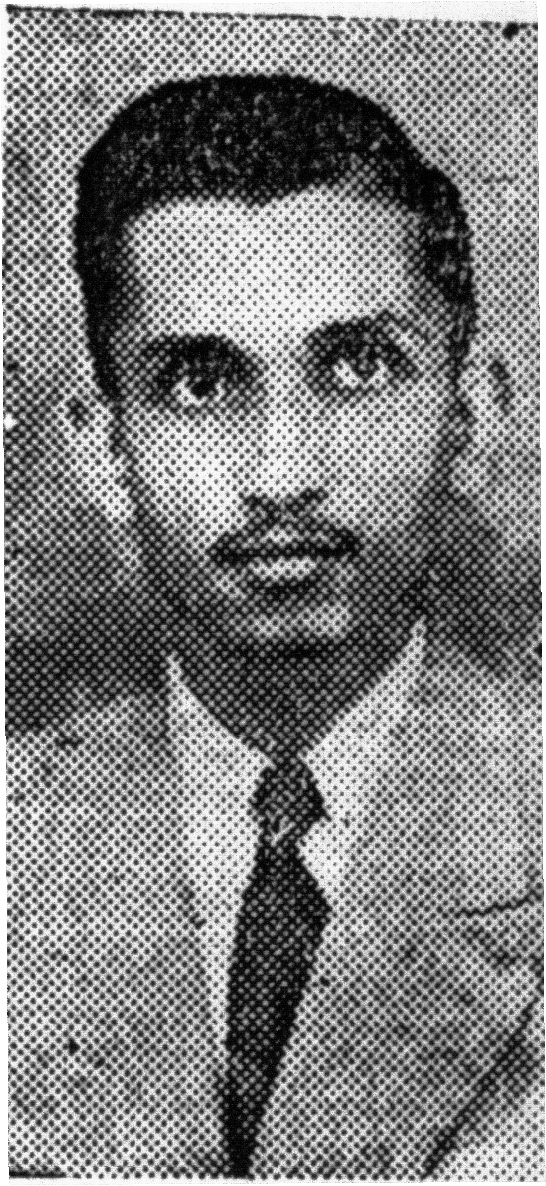
Left: Salahuddeen Mansoor Ahmad Nasir (Daily Chronicle, 26 January, 1948).
Salahuddeen Mansoor Ahmad Nasir was born on 18 April 1925 at Vreed-enHoop, West Bank Demerara to Mohamed Ahmad and Rojan Nasir. He attended St Smithin’s School in Vreed-en-Hoop and Modern Educational Institute in Georgetown. He entered into articles of clerkship with Mr Joseph Alexander Luckhoo KC in 1943, was admitted to practice as a solicitor in British Guiana on 25 January 1948 by Chief Justice Worley and was in private practice from then until 1961. In 1949, Mr Nasir married Fazeela Nasir, with whom he had five children.
Mr Nasir was appointed Deputy Crown Solicitor in 1961 and Crown Solicitor, Official Receiver and Public Trustee in 1962. In 1963 he was appointed acting Registrar of the High Court and of Deeds and in 1964 acted as a Judge of the Land Court. In 1964 Mr Nasir also served as a member of the political detainees tribunal. He was appointed to the Order of the British Empire in 1965.
In 1968 Mr Nasir became an associate solicitor at Cameron and Shepherd. A Notary Public from 1971, he also served for many years as a member of the Legal Practitioners’ Committee and was a member of the Land Registration Committee, which was responsible for the introduction of the Torrens system of land holding in Guyana and for the drafting of the Land Registry Act. Mr Nasir was also a member of the National Honours Committee in 1970 and 1986 and in 1980 was himself awarded the Cacique’s Crown of Honour, Guyana’s second highest national award at the time. Between 1983 and 1987 he served as the Honorary Consul for Pakistan in Guyana.
Mr Nasir retired from the partnership on the 15 November 1985. After his retirement he was for a brief period between 1986 and 1987 an associate at Clarke and Martin, Attorneys-at-Law, before joining the Ministry of Legal Affairs as General Legal Assistant in April 1987. In the same year he was appointed Senior Counsel. During this period Mr Nasir was also a member of the International Centre for the Settlement of Investment Disputes arbitration panel. Mr Nasir died on 10 August 2003 at the age of 78.
Ms Josephine Whitehead remembers Mr Nasir with gratitude:
He provided the best guidance an articled clerk and young solicitor could hope for. His door was always open, his knowledge of the law prodigious, he was unfailingly courteous and kind and was, except perhaps for my father, the most meticulous person I have ever met.
A devout muslim who made his hajj in, I think, the early 1980s, I remember how Mr Nasir (as I always called him; I couldn’t imagine calling him Mansoor) was always so very reluctant to swear an affidavit in case it might subsequently turn out to have contained some inadvertent and minuscule inaccuracy. While self-effacing, he was by no means unsociable, but he assiduously avoided staff parties due to his discomfort at being anywhere near alcohol.
Mr Nasir retired from Cameron and Shepherd while I was in the UK and I met him only once after I came back. It was at the Attorney General’s Chambers and I recall how strange it was to see him there, instead of in his Cameron and Shepherd office. Over the years since then, I have often wished that he were still here with his knowledge guidance and kindness.
Joseph Edward de Freitas died on 23 October 1972. He had held the position of senior partner of Cameron and Shepherd for over ten years before his death.
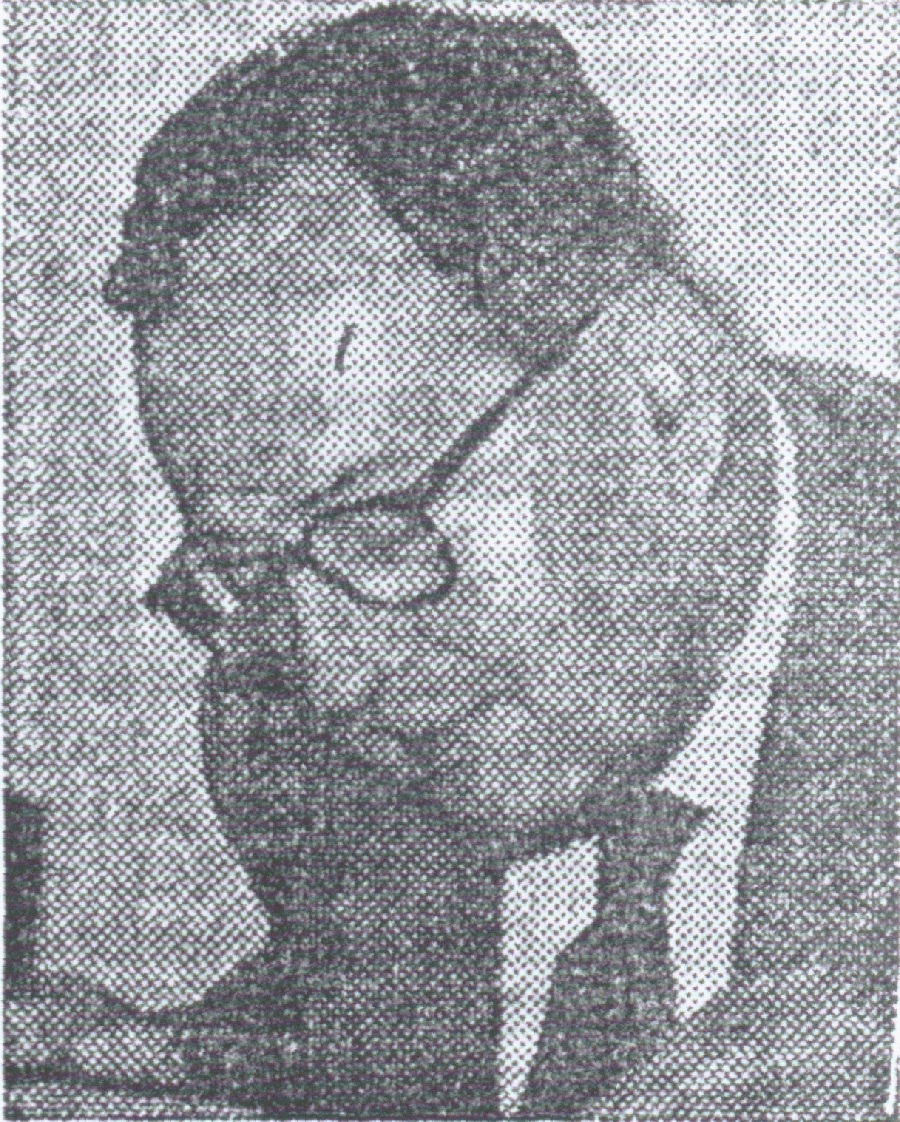

Left: Joseph Edward de Freitas (Guyana Graphic, 25 October 1972). Below the photograph is his signature taken from articles of partnership of Cameron and Shepherd dated 15 December 1931.
Joseph Edward de Freitas was born in British Guiana on 16 November 1902 to Dr José Manuel de Freitas and Mabel de Freitas, nee Paddenburg. He was educated at Carshalton Boys School and at Stonyhurst College, England.
On his return to British Guiana, Mr de Freitas was articled to Hon Francis Dias and passed the Law Society’s Solicitors’ Finals in March 1924. He joined Cameron and Shepherd in 1924 and in 1931 he became a junior partner. He was appointed a Notary Public in 1933 and became a Commissioner of Oaths in 1934.
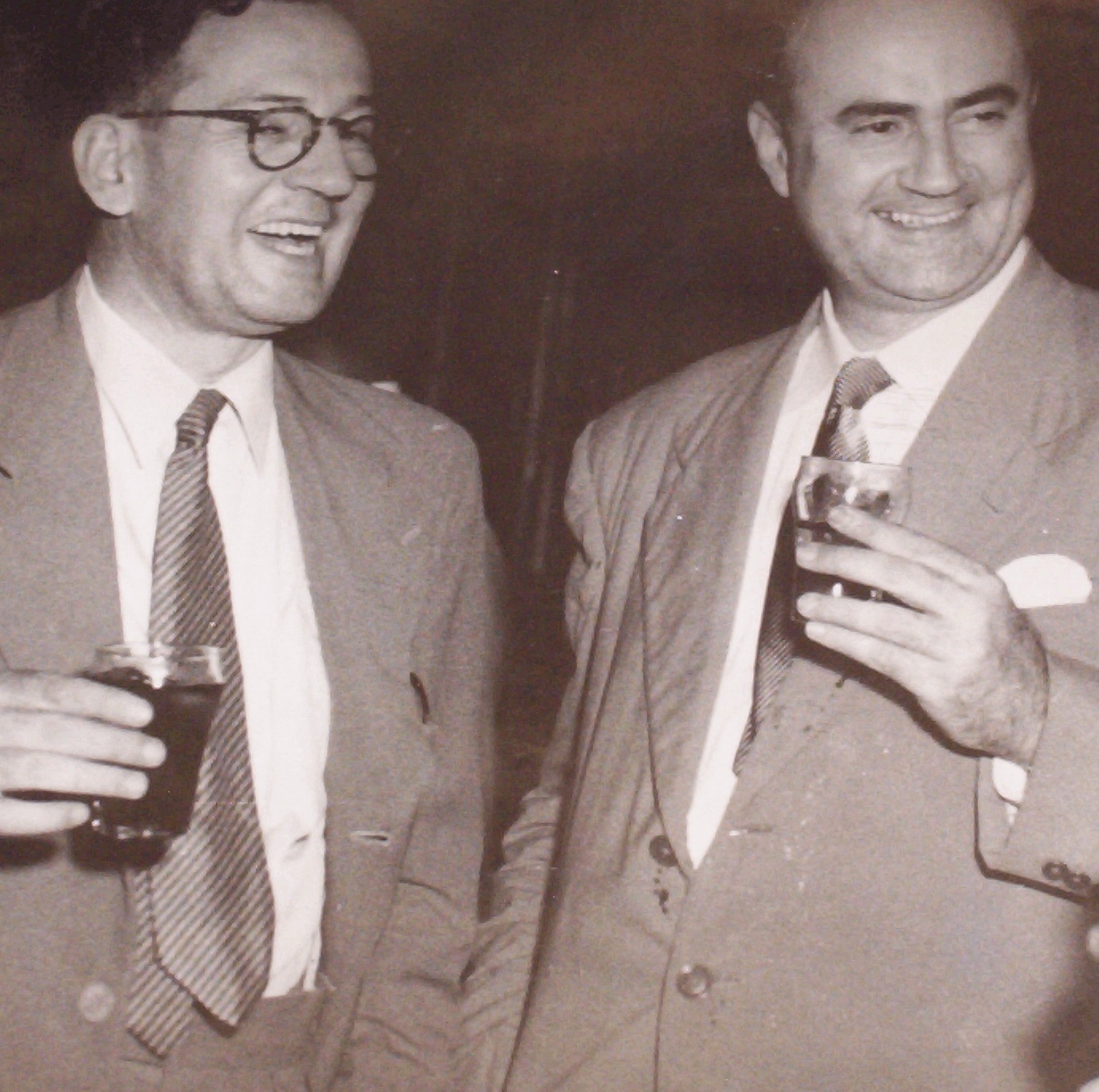
Left: Joseph Edward de Freitas (left) and Herman William de Freitas in earlier days. (Photograph courtesy Mr Anthony de Freitas).
On 8 February 1941, Mr de Freitas married Beryl Stanley Burrowes, who also worked at Cameron and Shepherd at the time. In 1943 he served as the vice president of the British Guiana Law Society. He was awarded the title of Commander of the British Empire in 1961 and in 1965 was only the second Guyanese to be made a Knight of St Gregory by the Pope.
Mr de Freitas was chairman of the board of the Catholic Hospital from 1945 until shortly before his death and was a member of the board of the Guyana Electricity Corporation from 1961 until his death.
For the forty-eight years between 1 May 1924, when he joined Cameron and Shepherd, to the date of his death, Mr Joseph Edward de Freitas was actively involved in, and largely responsible, for the firm’s successful management and development.
Mr David de Caires in his obituary of Mr de Freitas published in the Guyana Graphic on 25 October 1972 wrote: “J Edward was an outstanding lawyer, an exemplary Christian and a devoted family man”. He continued:
He was, of course an intimate and trusted adviser of the Catholic Hierarchy for many years and received the papal award of the Knight of St Gregory for his services, an award made only to one other Guyanese, Mr John Fernandes. It is not this that I had in mind, however, when speaking of him as an exemplary Christian but rather his practical contribution to social welfare and charity.
His crowning achievement was undoubtedly the Catholic Hospital, popularly known as St Joseph Mercy Hospital, which was incorporated in 1944, near the end of the second world war, to take over and run the clinic then run by a few doctors including the late Caesar Romiti, an Italian, who had been interned at Sibley Hall. J Edward was the guiding force behind its formation, with the help of substantial donations from leading Catholics and was the chairman from 1945 until a year ago when he when he was unable to carry on because of illness. Countless thousands must have benefitted from this work of his.
He was, in addition, a leading light in the St Vincent de Paul Society and other Catholic organisations and was never too busy to offer his services. His Christianity was not, indeed, that of the pharisee but very practical and constructive. To put it simply, I believe he took it seriously, which is most unusual.
J Edward was, of course, best known as a lawyer. Having worked with him while articled and after when qualified, I came to the conclusion that he was possessed of certain qualities not often found in the profession here, and which set him apart.
First and foremost, he was devoted, in the old fashioned sense to the theory and practice of the law. I saw the toll this took on him, physically and mentally, and realised the rigours and responsibilities involved in undertaking, with responsibility, the practice of this ‘noble profession’. No wonder so few of us can follow in his footsteps. A 10 or 12 hour day in the tropics, and an infinite variety of pressures – time limits, importunate clients and the various evils conscientious lawyers are heirs to. It’s so much easier to masquerade!
Apart from his integrity, he acquired great experience in the course of his 48 years’ practice and a general competence and academic understanding of our law and its history which was quite unmatched in my experience of the profession. He was, of course, in his day the president of the Law Society for many years and the editor of the Law Society Gazette. Suffice it to say that there has been no worthwhile publication since its demise.
He was, of course, an extremely busy man. Company law was perhaps his speciality and he must have formed a hundred companies in his time. He was on the board of numerous companies. The New Building Society was one of his pet causes and he guided the affairs of that company for many years.
In fact a large proportion of the corporate structure that now exists in this country can be traced to his hands. But most of all he was a confidant, a father confessor to literally hundreds of worried businessmen and property owners and quite a few small men who were permitted to inflict their troubles on him at all hours of the day and night without regard for his declining health. Truly he saw the role of a lawyer as a responsible and exacting one and acted it out fully and unflinchingly.
After the death of Joseph Edward de Freitas, Paul Adrian de Freitas and Ivor Layton Wilkinson became partners at Cameron and Shepherd as from 1 January 1973.
Below: Paul Adrian de Freitas and the Master of the Rolls, Lord Denning c 1974 (Photograph courtesy Mr Anthony de Freitas).
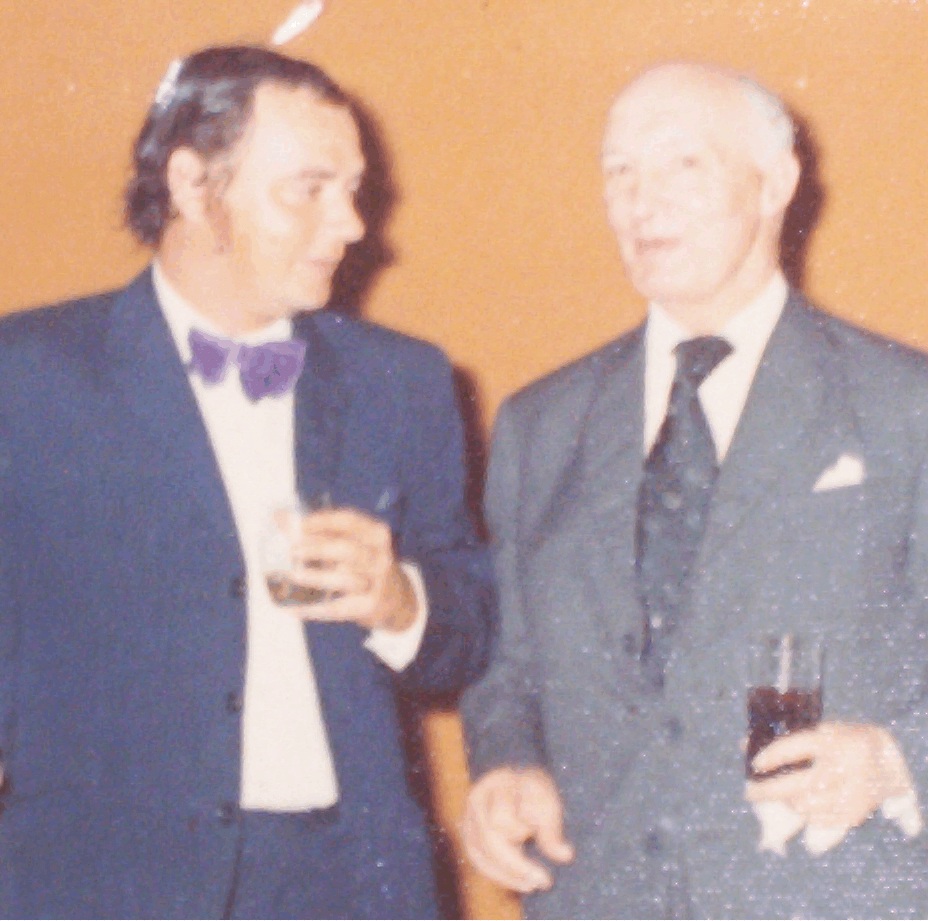
Paul Adrian de Freitas was born on 6 February 1942 at Georgetown, British Guiana, the elder son of Joseph Edward de Freitas and Beryl Stanley de Freitas, nee Burrowes. He attended St Stanislaus College in Guyana and St Mary’s Hall and Stonyhurst College in England from about 1952 to about 1960. Mr de Freitas later joined Gray’s Inn and was called to the Bar in England around July 1968. He married Afric Deed in July 1969 in England and the couple then returned to Guyana, where Mr de Freitas joined Cameron and Shepherd as an associate until 1973 when he became a partner. He died on 27 November 1975.
Ivor Layton Wilkinson was born on 9 November 1940 at Georgetown, British Guiana to Herbert Wilkinson and Norah Wilkinson, nee Herbert. He attended St Stephen’s Church of Scotland School and St Stanislaus College from 1945 to 1957. After leaving school, he worked at the Deeds Registry of British Guiana between January 1958 and November 1961.

Left: Herman William de Freitas and Ivor Layton Wilkinson at a Law Society and Bar Association dinner in Georgetown on 14 December 1972.
In November 1961, Mr Wilkinson began his articles of clerkship with Herman William de Freitas and on 4 July 1967, he was admitted to practice as a solicitor in Guyana. He was an associate solicitor at Cameron and Shepherd until January 1973 when he became a partner.
On 20 December 1969, Mr Wilkinson married Margaret de Freitas, who also worked at Cameron and Shepherd at the time, and the couple have one son, Donald. On 15 March 1976, Mr Wilkinson was admitted to practice as a solicitor in England.
Mr Wilkinson left the partnership in April 1976 to live and work in Barbados. Having joined the Caribbean Development Bank (CDB) in May 1976 as legal counsel, he subsequently became Assistant General Counsel, Deputy General Counsel and in July 1995, General Counsel.
His work at CDB involved the provision of legal services in relation to country assigned, multi-country, regional and international development finance projects, including the preparation of loan, guarantee and grant agreements.
As General Counsel to CDB, Mr Wilkinson was involved in negotiating and finalising international agreements. In addition to managing the Bank’s legal department, he advised the senior management group, the board of directors and governors and sat on the president’s advisory council and the loans and other committees.
Mr Wilkinson retired from CDB in May 2003 and returned to private practice. He does however continue to provide services to the Bank on a consultancy basis.
In January 1975, Josephine Whitehead joined Cameron and Shepherd as an articled clerk. She was admitted to practice as a solicitor in Guyana in 1979 and became a salaried partner on 30 September 1982.

Above: Mr Joseph Arthur King and others on their admission to the Inner Bar with the Judges of the High Court (Guyana Graphic, 17 October 1975).
On 16 October 1975, Mr Joseph Arthur King was appointed Senior Counsel along with Messrs Ronald Luckhoo, Donald Robinson, Claude Massiah and Rex Mc Kay. The Full Court sitting to admit the new Senior Counsel was presided over by Chief Justice Sir Harold Bollers and comprised Messrs Justices Frank Vieira, Rudolph Harper, Horace Mitchell, Maurice Churaman, Lindsay Collins, Kenneth George and Dhan Jhappan. The admission of the Senior Counsel was moved by the Attorney General, Dr Mohammed Shahabuddeen.
On 1 July 1977, Hari Narayen Ramkarran joined Cameron and Shepherd as an associate counsel. He had attended the Honourable Society of Gray’s Inn and was admitted to practice in England on 20 July 1972, and in Guyana on 9 January 1973. He became a partner on 30 September 1982.
In 1984, Rafiq Turhan Khan joined the firm. He was educated at the University of the West Indies, Cave Hill campus and Norman Manley Law School, and was admitted to practice as an attorney-at-law in 1984. He became a partner in October 1987.
On 11 September 1987, Herman William de Freitas died. He had been a partner at Cameron and Shepherd for forty-six years. He was born on 30 January 1912 and was admitted to practice as a solicitor in 1935. He was appointed a Notary Public in 1948. Mr. de Freitas had been a member and the chairman of the Discharged Prisoners Aid Commission between 1947 and 1962, and a member of the Treatment of Young Offenders Commission between 1963 and 1967.
Right: Herman William de Freitas at the funeral of his brother Joseph Edward de Freitas (Guyana Graphic, 26 October 1972). Below the photograph is a copy of his signature taken from Chandler’s Trust Accounts (1933).
Mr H N Ramkarran says of Mr Herman William de Freitas:


Herman unobtrusively supervised the conveyancing, probate and administration and trade mark departments of the firm. These were the substantial income producing departments, to some extent subsidising the litigation work, which, though vast and visible to the public, did not command the same respectability with regard to fees.
In this regard his work and contribution, though sometimes underestimated, was of great importance. The degree of his range of responsibilitywas usuallyrevealed at our Wednesday afternoon tea and snacks (supplied in my time by the Hotel Tower) meetings of partners, associates and senior staff, when Mr Herman as he was called by staff, would seek views and opinions on diverse problems. After his death his responsibilities were so vast that they had to be divided up among us.
His importance to the firm was noted by me in my eulogy at the Full Court sitting on his death. I pointed out not only his long contribution to the firm and to law but his social and charitable work, particularly with St Vincent de Paul Society and other organisations associated with the Catholic Church.
On 15 January 1990 a fire on Avenue of the Republic completely destroyed the building at 3 Avenue of the Republic, where the offices of Cameron and Shepherd were once housed, and partially destroyed the Cameron and Shepherd building at 2 Avenue of the Republic. Reporting on the fire, the Guyana Chronicle of 16 January 1990, said:
The fire which started in an unused kitchen on the top flat of the building known as Fisherman’s Paradise also partly destroyed the building housing the law frm of Cameron & Shepherd.
The Assistant General Secretary of the New Building Society which was in the direct path of the fire but which was saved, said that he thought that the firefighters could have done a better job.
According to him there was no need for the Cameron and Shepherd building to have caught up at all.
However Mr Ralph Ramkarran [as Hari Narayen Ramkarran is called], Attorney-at-Law of the law firm, agreed that there was no need for the fire to reach his firm, but spoke kindly of the firefighters some of whom, he said risked their lives by entering the building to fight the flames from inside.
Mr Ramkarran of Cameron and Shepherd said that the southern part of the building had been destroyed as well as the roof and the back of the property.
According to him, there has been extensive water damage to files and books and irreplaceable documents.
Below: The fire in progress (Guyana Chronicle, 16 January 1990).
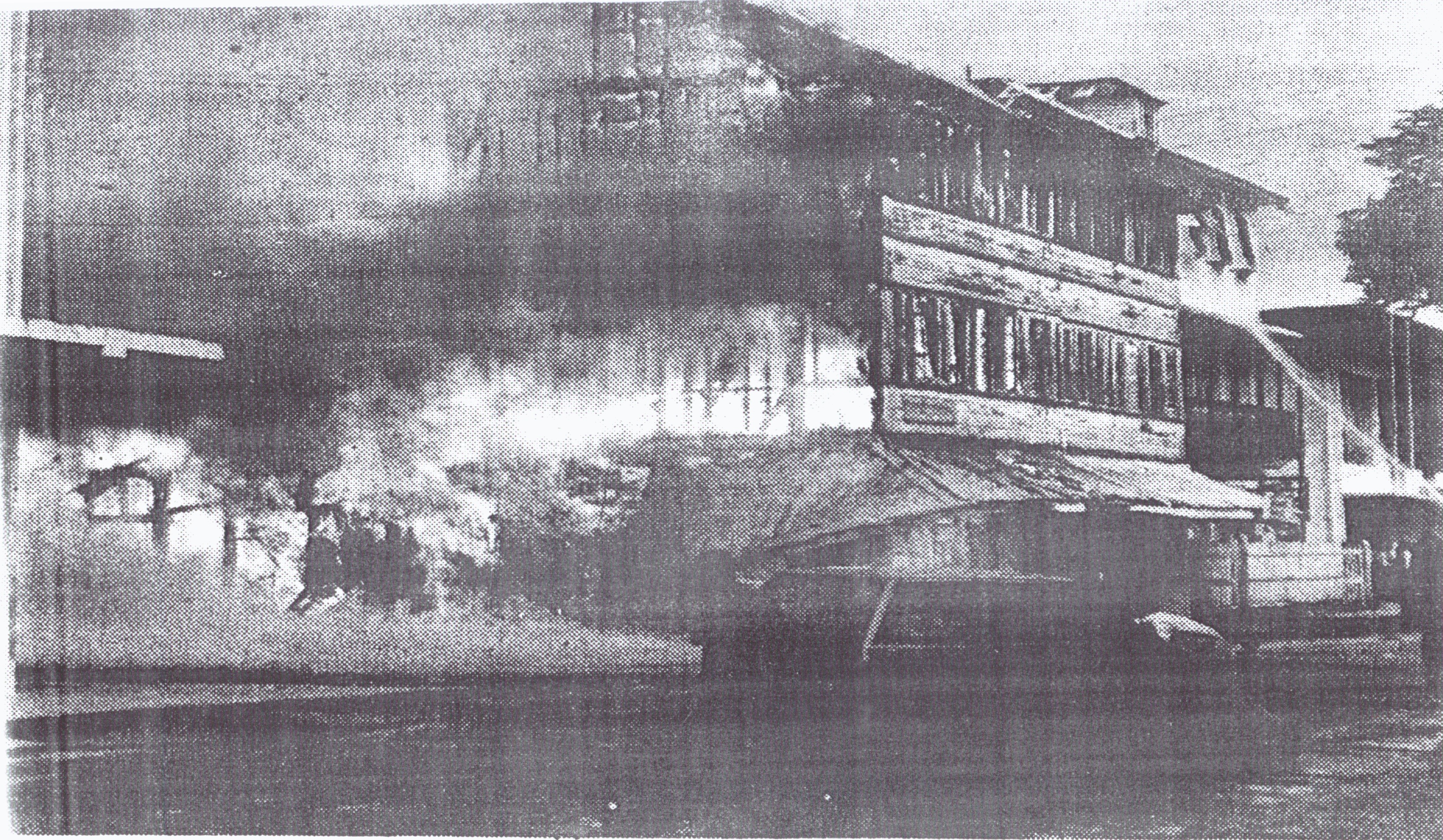
The Guyana Chronicle for 17 January 1990 reported that: “the Fire Chief explained that Cameron and Shepherd caught fire from the attic where a lot of combustible materials, including papers were stored”. The report continued: “After the papers were ignited the firefighters had to force their way into the smoke-filled building to fight the flames from above”.
The Stabroek News for 17 January 1990 reported that:
While the fire raged at the corner, Mr Joey King of Cameron and Shepherd, the oldest law firm in Guyana, climbed from the New Building Society’s fence to the roof of the garage of his office. He went into the building through a window and quickly threw Guyana Law Reports volumes and valuable documents to lawyer Nigel Hughes in the NBS compound.
The Stabroek News of that date also reported that during the fire, a woman stood crying outside Cameron and Shepherd because her father’s transport was in the building.

Above: Firemen trying to save Cameron and Shepherd (Stabroek News, 17 January 1990).
The top floor of the Cameron and Shepherd building was not replaced and the building now comprises two storeys and an attic.
Right: The Cameron and Shepherd building on 27 April 2004 from the western corridor of the High Court.
On 12 June 1996 Hari Narayen Ramkarran was appointed Senior Counsel along with Messrs Samuel Brotherson, Moenudin Mc Doom, Richard Fields, Charles Ramson and Ian Chang. The special Full Court sitting for this purpose was held on 28 June 1996 and comprised Chief Justice Cecil Kennard, Messrs Justices Oslen Small, Nandram Kissoon, Desmond Burch-Smith, Ramraj Jagnandan, Carl Singh, Donald Trotman, Deonarine Biscessar and Dennis Hanoman-Singh and Mesdames Justices Claudette Singh and Claudette La Bennett.

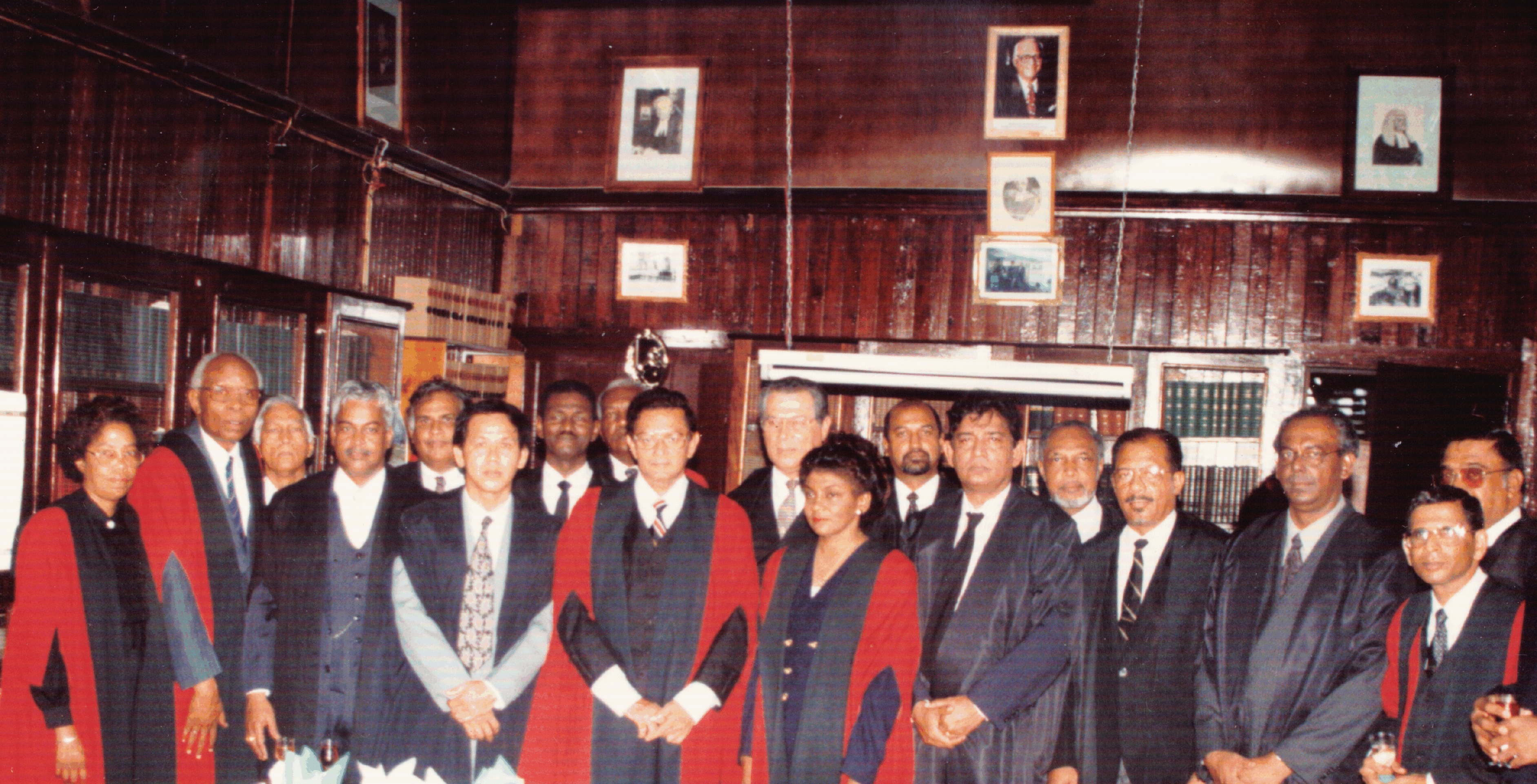
Above: Mr Hari Narayen Ramkarran and others on their admission to the Inner Bar with the Judges of the High Court on 28 June 1996. (Photograph courtesy Mr Ramkarran) From left to right are - Madame Justice Claudette La Bennett, Mr Justice Oslen Small, Mr Justice Deonarine Biscessar, Mr Charles Rishiram Ramson SC, Mr Justice Nandram Kissoon (as he then was), Mr Ian Neville Chang SC (as he then was), Mr Samuel Elijah Brotherson SC, Mr Justice Desmond Burch-Smith, Mr Chief Justice Cecil Kennard (as he then was), the Attorney General Mr Bernard de Santos SC, Madame Justice Claudette Singh (as she then was), Mr Justice Carl Singh (as he then was), Mr Moenudin McDoom SC, Mr Justice Donald Trotman. Mr Richard Berkely Fields SC, Mr Hari Narayen Ramkarran SC, Mr Justice Dennis Hanomansingh and Mr Justice Ramraj Jagnandan.
On 1 October 2000 Nikhil Narayan Ramkarran, the elder son of Hari Narayan Ramkarran and Janet Ramkarran, nee Razack was employed as an associate at Cameron and Shepherd. He was born on 2 June 1975, obtained a Bachelor of Laws degree with honours from the University of the West Indies in 1998, a Legal Education Certificate from the Hugh Wooding Law School in 2000, and was admitted to practice as an attorney-at-law in Guyana in October 2000.
On 1 November 2002, Kamal Shiromani Ramkarran, the younger son of Hari Narayan and Janet Ramkarran was employed as an associate at Cameron and Shepherd. He was born on 14 January 1979, obtained a Bachelor of Laws degree with honours from the University of the West Indies in 2000, a Legal Education Certificate from the Hugh Wooding Law School in 2002, and was admitted to practice as an attorney-at-law in Guyana on 8 October 2002.

Above: The attorneys-at-law of Cameron and Shepherd on 8 October 2002 in the High Court. From left to right: Nikhil Narayan Ramkarran, Kamal Shiromani Ramkarran, Josephine Whitehead, Hari Narayen Ramkarran SC, Joseph Arthur King SC and Rafiq Turhan Khan.
The Cameron and Shepherd prize was inaugurated in 2002. A choice of books from the Sweet and Maxwell Common Law Library is awarded to the best graduating student in Civil Practice and Procedure I and II at the Hugh Wooding Law School. The prize for 2002 was awarded to Ms Ravina Singh, attorney-at-law, currently in private practice and for 2003 to Ms Laurian Bancroft, an attorney-at-law currently employed at the Caricom Secretariat.

Above: the staff of Cameron and Shepherd on 28 May 2004.

